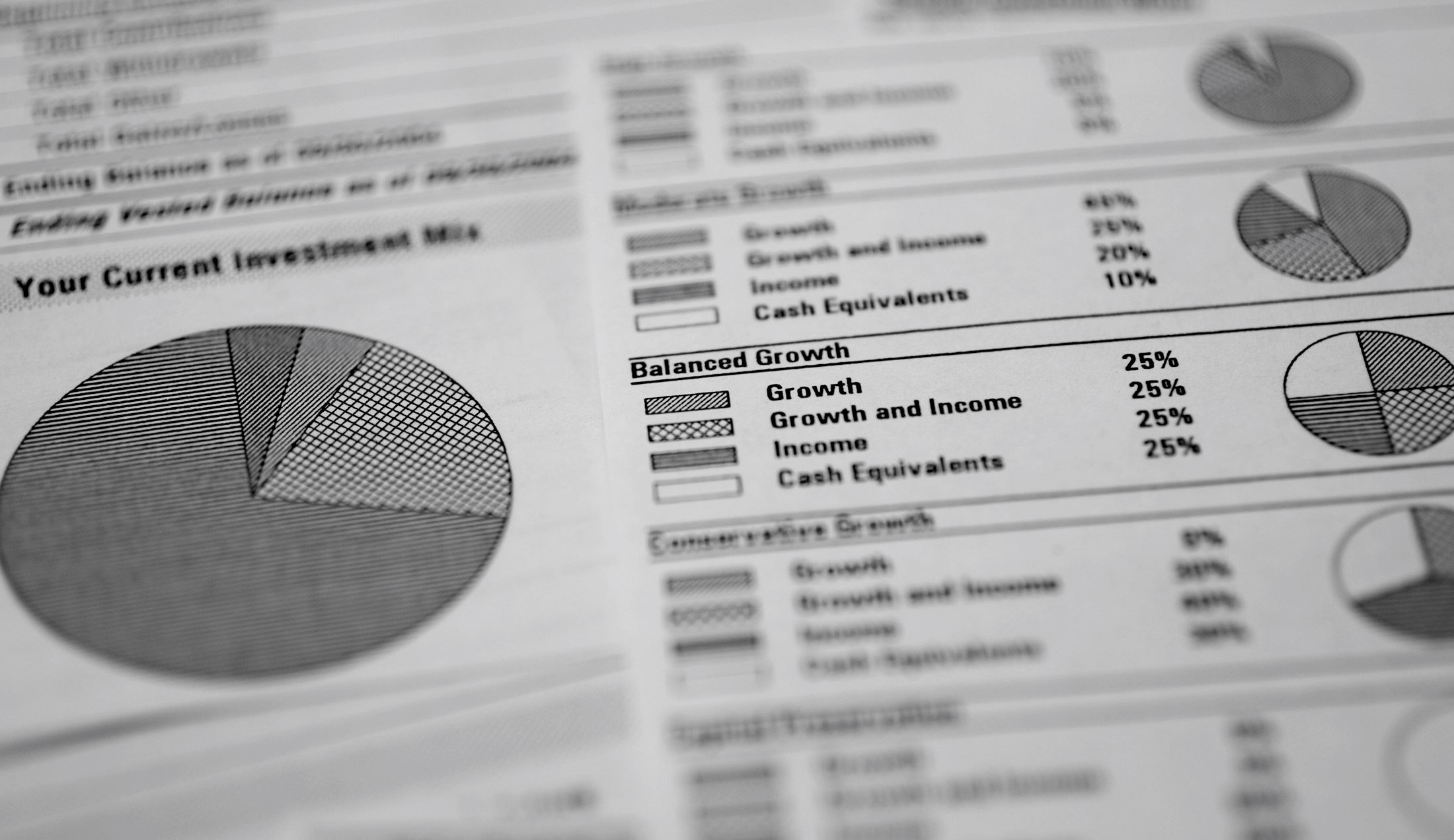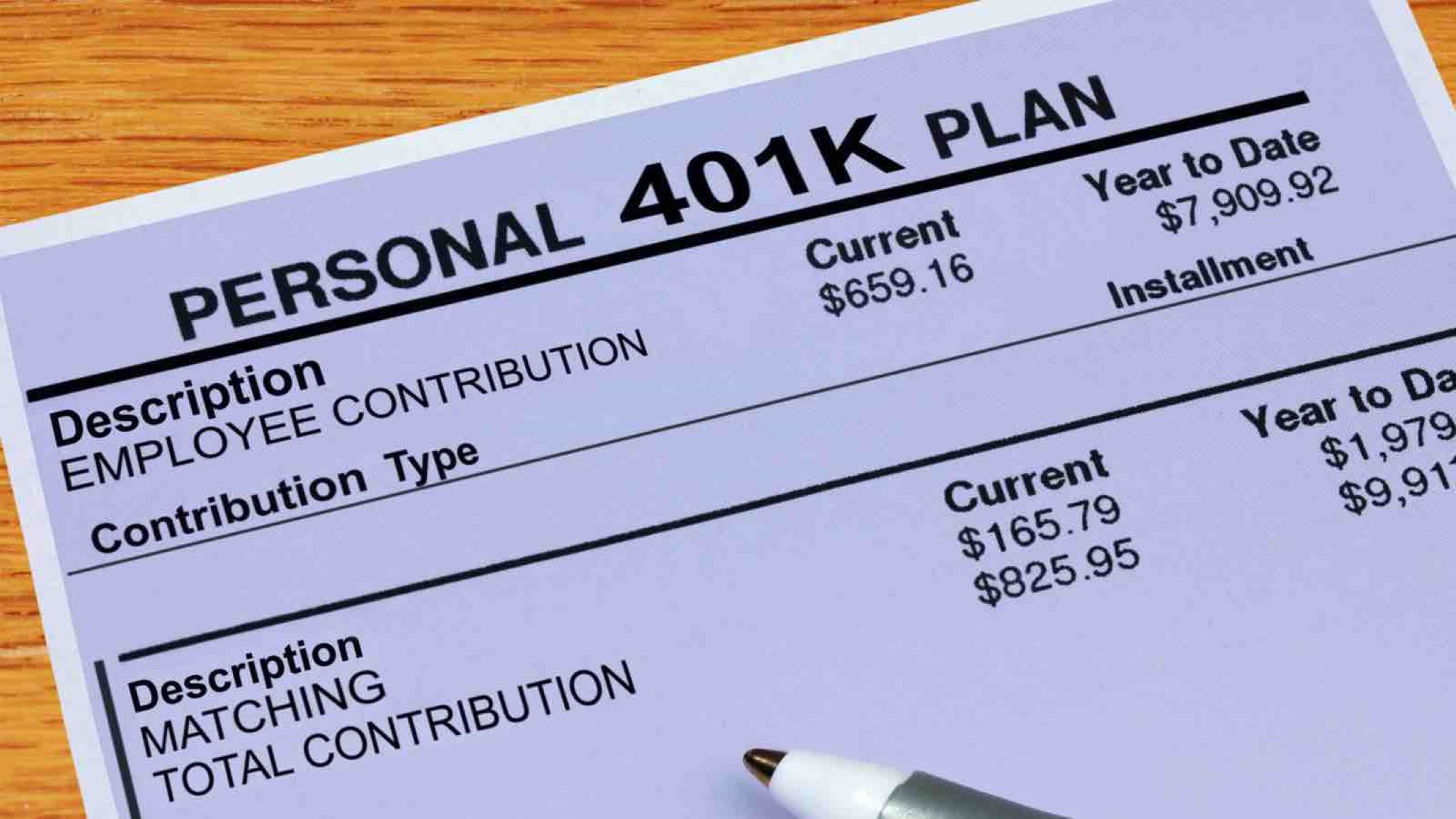

Finance
How To Check My 401K
Published: October 17, 2023
Learn how to check your 401K and manage your finances effectively with our helpful guide. Take control of your financial future today!
(Many of the links in this article redirect to a specific reviewed product. Your purchase of these products through affiliate links helps to generate commission for LiveWell, at no extra cost. Learn more)
Table of Contents
- Introduction
- Understanding the 401K
- Collecting Relevant Information
- Accessing the 401K Provider’s Website
- Navigating the Account Summary
- Reviewing Contribution and Investment Details
- Checking Account Balances
- Monitoring Investment Performance
- Examining Transaction History
- Beneficiary and Distribution Options
- Contacting the 401K Provider
- Frequently Asked Questions
- Conclusion
Introduction
Welcome to the guide on how to check your 401K! Your 401K is an essential retirement savings tool that can help secure your financial future. It’s crucial to periodically review your 401K account to ensure that you’re on track towards reaching your retirement goals.
Checking your 401K account allows you to monitor your contributions, investment performance, account balance, and review transaction history. It also provides an opportunity to make any necessary adjustments to your investment strategy or beneficiary information.
While every 401K provider may have a different user interface and set of features, this guide will help you navigate the process of checking your 401K effectively and efficiently.
By regularly monitoring your 401K, you can remain informed about your retirement savings progress and make informed decisions that align with your long-term financial goals. So, let’s dive into the details on how to check your 401K!
Understanding the 401K
Before we delve into checking your 401K, let’s take a moment to understand what a 401K is and how it works. A 401K is a retirement savings plan that allows employees to contribute a portion of their salary on a pre-tax basis. These contributions are then invested in a variety of financial instruments, such as stocks, bonds, and mutual funds, with the goal of accumulating wealth for retirement.
One of the key benefits of a 401K is that contributions are typically matched by your employer, up to a certain percentage of your salary. This employer match is essentially free money that boosts your retirement savings.
It’s important to note that 401K contributions are subject to contribution limits set by the Internal Revenue Service (IRS). As of 2021, the annual contribution limit for a 401K is $19,500 for individuals under the age of 50. If you are 50 or older, you can make an additional catch-up contribution of $6,500, bringing the total annual limit to $26,000.
While contributions to a 401K are made on a pre-tax basis, meaning they are deducted from your paycheck before taxes are calculated, withdrawals from a 401K are taxed as ordinary income when you reach retirement age. Additionally, if you withdraw funds from your 401K before the age of 59 and a half, you may be subject to early withdrawal penalties and taxes.
Understanding these fundamental aspects of a 401K is essential as you navigate the process of checking your account. It provides context and allows you to make informed decisions about your retirement savings.
Collecting Relevant Information
Before you can begin checking your 401K, it’s important to gather the necessary information that will enable you to access your account online. Here are some key details you’ll need:
- 401K Provider Information: Identify the financial institution or company that administers your 401K. This may be your employer or a third-party provider.
- Account Credentials: Collect your username and password for accessing your 401K account online. If you haven’t set up online access, you may need to contact your employer or the 401K provider to obtain these credentials.
- Security Questions: Some 401K providers may have security questions or multi-factor authentication in place to ensure the safety of your account. Make note of these questions and answers, as they may be required during the login process.
- Contact Information: Have your contact information handy, including your email address and phone number, in case you need to update or verify your account details.
- Social Security Number: You may need to provide your Social Security number for identification purposes when accessing your 401K account.
By collecting this relevant information beforehand, you’ll be prepared to access your account seamlessly and securely.
If you are unable to locate any of the necessary information, it’s best to reach out to your employer or the 401K provider directly. They will be able to assist you in obtaining the required details and ensuring that you have the correct access to your account.
Accessing the 401K Provider’s Website
Once you have gathered all the relevant information mentioned earlier, the next step is to access the website of your 401K provider. Here’s a step-by-step guide on how to do it:
- Open your preferred web browser on your computer or mobile device.
- Type in the URL or web address provided by your 401K provider. This may be a specific website for your employer’s retirement plan or a third-party provider’s site.
- Press Enter or tap the “Go” button to navigate to the website.
- Look for the “Login” or “Sign In” button on the homepage of the 401K provider’s website. It’s usually located at the top right corner or within a prominent section of the page.
- Click on the “Login” or “Sign In” button to proceed.
- Enter your username and password in the designated fields on the login page.
- Some 401K providers may have additional security measures, such as security questions or multi-factor authentication, to ensure the safety of your account. If prompted, provide the necessary information or complete the required steps.
- After entering your login credentials and any additional security measures, click on the “Log In” or “Submit” button to access your 401K account.
Once you have successfully logged in, you will be directed to your account dashboard or summary page, where you can view the details of your 401K plan.
If you encounter any issues while accessing the 401K provider’s website or logging into your account, it’s advisable to contact the customer support team of your 401K provider for assistance. They will be able to guide you through the troubleshooting process and help you gain access to your account.
Navigating the Account Summary
Once you have successfully logged into your 401K account, you will be presented with an account summary or dashboard. This section provides a comprehensive overview of your retirement savings progress. Here’s how to navigate the account summary:
- Contributions: The account summary typically displays the total amount of contributions you have made to your 401K. It may be further broken down into employer contributions and employee contributions.
- Investment Performance: Look for a section that showcases the performance of your investments. This may include a graph or chart illustrating the growth of your portfolio over time.
- Account Balance: The account summary will prominently display your current 401K account balance, which is the total value of your investments at the present moment.
- Personal Details: Check for a section that contains your personal information, such as your name, contact details, and beneficiary information. It’s essential to review and ensure that your personal details are accurate and up to date.
- Menu or Navigation Bar: Look for a menu or navigation bar that allows you to access different sections of your 401K account. This may include options such as investment details, transaction history, beneficiary information, and more. Familiarize yourself with the menu options to easily navigate through your account.
As you explore the account summary, take note of any other sections or features that may be specific to your 401K provider. The layout and organization of the account summary may vary depending on the platform used by your employer or the third-party provider.
If you need assistance in understanding any of the information displayed in the account summary or have questions about your 401K, it’s recommended to contact the customer support team of your 401K provider. They can provide clarification and guide you through the details of your account.
Reviewing Contribution and Investment Details
Reviewing your contribution and investment details is a crucial step when checking your 401K. It allows you to understand how much you have contributed and how your investments are performing. Here’s how you can review these important details:
- Contributions: Navigate to the contribution section of your 401K account. Here, you will find information about your contribution history, including the amount you have contributed in total and the breakdown of employer and employee contributions. Take note of the contribution amounts and ensure they align with your expectations and retirement savings goals.
- Investment Holdings: Explore the investment details section, which provides a detailed breakdown of the holdings in your 401K. You will see the individual investments, such as stocks, bonds, or mutual funds, that make up your portfolio. Pay attention to the allocation percentages of each investment to assess the diversification of your holdings.
- Asset Allocation: Assess your asset allocation to determine if it aligns with your risk tolerance and long-term financial goals. A well-diversified portfolio spreads investments across different asset classes to manage risk. Depending on your 401K provider, you may have access to tools or resources that can help you analyze and adjust your asset allocation if needed.
- Investment Performance: Analyze the performance of your investments. Most 401K account summaries provide a snapshot of your investment returns, typically shown as a percentage or dollar amount gained or lost. Compare your investment performance against benchmarks or market indices to gauge how well your portfolio is performing.
- Automatic Contributions: If you have set up automatic contributions, review the details to ensure they are being processed correctly. Check the frequency, amount, and start/end dates of the automatic contributions to make sure they align with your desired savings strategy.
By regularly reviewing your contribution and investment details, you can stay informed about the progress of your 401K. It also provides an opportunity to make any necessary adjustments to your contributions or investment allocation to stay on track towards your retirement goals.
If you have any questions or concerns about your contribution or investment details, don’t hesitate to reach out to your 401K provider’s customer support team. They can provide further assistance and guidance to help you make informed decisions regarding your retirement savings.
Checking Account Balances
Checking your account balance is a critical aspect of managing your 401K. It enables you to monitor the growth of your retirement savings and ensure that you’re on track towards reaching your financial goals. Here’s how you can check your account balance:
- Account Summary: Refer to the account summary or dashboard of your 401K account, as mentioned earlier. The account balance is typically prominently displayed in this section. It represents the total value of your investments as of the most recent update.
- Current Balance: Pay attention to the “Current Balance” figure, which reflects the real-time value of your 401K. This takes into account any investment gains or losses, contributions, and withdrawals.
- Historical Balance: Some 401K providers may provide a historical balance chart or graph, showing the growth of your account balance over time. This allows you to track your progress and see how your retirement savings have increased over the years.
- Investment Performance: Keep in mind that your account balance is influenced by the performance of your investments. If your investments have performed well, your account balance is likely to reflect growth. Conversely, if your investments have faced losses, the account balance may be lower.
- Contributions and Withdrawals: Consider any recent contributions or withdrawals you have made, as they directly impact your account balance. Contributions increase your balance, while withdrawals decrease it. Take note of the timing and amount of these transactions to accurately assess your current balance.
Regularly checking your account balance allows you to monitor your progress and make necessary adjustments to your retirement savings strategy. It’s important to keep in mind that account balances can fluctuate due to market conditions, investment performance, and contributions.
If you have any concerns about your account balance or need clarification on how it is calculated, don’t hesitate to reach out to your 401K provider. Their customer support team will be able to answer your questions and provide guidance on monitoring and managing your account balance effectively.
Monitoring Investment Performance
Monitoring the performance of your investments is crucial when managing your 401K. It allows you to assess how your portfolio is performing and make informed decisions regarding your investment strategy. Here are some steps to help you effectively monitor your investment performance:
- Investment Summary: Access the investment summary section of your 401K account. This section provides an overview of the performance of each investment within your portfolio.
- Rate of Return: Look for the rate of return associated with each investment. This figure represents the gain or loss of an investment over a specific period. It may be expressed as a percentage or a dollar value.
- Time-Weighted Returns: Evaluate the time-weighted returns, which account for the overall performance of your investments over a specific period, regardless of the timing and amount of contributions or withdrawals.
- Benchmark Comparison: Compare the performance of your investments against relevant benchmarks or market indices. This helps you gauge how well your portfolio is performing compared to the broader market.
- Asset Class Performance: Analyze the performance of investments across different asset classes, such as stocks, bonds, and mutual funds. This information helps you assess if your portfolio is properly diversified and if adjustments need to be made to rebalance your holdings.
- Historical Performance: Take note of the historical performance of your investments. Look for charts, graphs, or tables that illustrate the growth or decline of your investments over time. This allows you to identify trends and patterns in your investment performance.
- Investment Allocation: Assess the allocation of your investments across different asset classes and investment vehicles. Ensure that your allocation aligns with your risk tolerance and long-term financial goals. Adjustments may be necessary to maintain a balanced and diversified portfolio.
Regularly monitoring your investment performance empowers you to make informed decisions about your 401K. It helps you identify underperforming investments and consider potential adjustments to optimize your portfolio’s growth potential.
If you have any questions or concerns about investment performance or need guidance on making changes to your investment strategy, reach out to your 401K provider. They can provide insights, tools, and resources to help you navigate the intricacies of investment monitoring and make informed decisions.
Examining Transaction History
Examining your transaction history is an essential part of managing your 401K. It allows you to review the activity within your account and keep track of contributions, withdrawals, and other transactions. Here’s how you can examine your transaction history:
- Transaction Log: Access the transaction history section of your 401K account. This log typically provides a detailed record of all transactions made within your account.
- Contributions: Review the contributions section to see a list of all the payments made into your 401K. This includes both employer contributions and any voluntary contributions you have made over time. Verify that the contribution amounts match your records.
- Withdrawals: Check for any withdrawals you have made from your 401K, such as distributions or loans. Make sure the withdrawal amounts and dates align with your records and any applicable tax implications.
- Investment Purchases: Examine the transaction history for information on investments purchased within your 401K. This may include stocks, bonds, mutual funds, or other investment vehicles. Take note of the investment type, date of purchase, and the amount invested.
- Dividends and Capital Gains: Look for any dividends or capital gains earned on your investments. These transactions represent the income generated from your investments and can contribute to the growth of your 401K account.
- Transaction Details: Click on each transaction to view additional details, such as the date, amount, and any associated fees or taxes. This allows you to have a comprehensive understanding of each transaction and its impact on your 401K account.
By examining your transaction history, you can ensure that all transactions within your 401K account are accurate and align with your records. It helps you track the flow of funds and provides a clear picture of your retirement savings activity.
If you notice any discrepancies or have questions about specific transactions in your history, it’s advisable to contact your 401K provider’s customer support team. They will be able to provide clarification and assist you in resolving any concerns or issues related to your transaction history.
Beneficiary and Distribution Options
Understanding your beneficiary and distribution options is a crucial aspect of managing your 401K. It ensures that your retirement savings are passed on according to your wishes and provides guidance on how distributions can be made. Here’s what you need to know:
- Beneficiary Designation: Review your beneficiary designation form to ensure that it reflects your current wishes. This form specifies who will receive your 401K funds in the event of your passing. It’s important to regularly review and update this information, especially if you experience any major life changes such as marriage, divorce, or the birth of a child.
- Beneficiary Options: Familiarize yourself with the beneficiary options provided by your 401K provider. Common options include naming an individual, a trust, or your estate as the beneficiary. Each option carries different implications regarding tax treatment and distribution rules, so it’s wise to consult with a financial advisor or estate planning professional to determine the best option for your circumstances.
- Distribution Planning: Consider your distribution options as you approach retirement age. Most 401K plans allow for various distribution methods, including lump-sum payments, periodic payments, or annuities. Review the distribution rules and determine which option aligns with your retirement goals and financial needs. Be mindful of tax implications and potential penalties associated with early withdrawals.
- Tax Considerations: Understand the tax implications of beneficiary designations and distribution options. Different beneficiaries may be subject to different tax treatment, and distributions from 401K accounts are typically taxed as ordinary income. Consult with a tax advisor to ensure you have a clear understanding of the tax consequences related to your beneficiary and distribution choices.
- Review and Update: Regularly review and update your beneficiary and distribution options as needed. Life circumstances can change, and it’s important to ensure that your retirement savings align with your current wishes and financial plans.
Proactively addressing your beneficiary and distribution options provides peace of mind and ensures that your retirement savings are handled according to your wishes. Take the time to thoroughly understand these options and seek professional guidance when necessary.
If you have questions about your beneficiary designation form or need assistance in selecting the most suitable distribution method for your needs, reach out to your 401K provider or consult with a financial advisor. They can provide the guidance and expertise you need to make informed decisions regarding your beneficiary and distribution options.
Contacting the 401K Provider
If you have any questions, concerns, or need assistance regarding your 401K account, it’s important to know how to contact your 401K provider. Here are some steps to help you reach out to them:
- Customer Support: Look for the customer support contact information provided by your 401K provider. This is typically available on their website or within your account portal. It may include a phone number, email address, or a support form.
- Phone Support: If a phone number is available, consider calling the customer support line during their business hours. Be prepared to provide your account information and any specific details related to your inquiry.
- Email Support: If an email address is provided, you can send an email outlining your question or concern. Make sure to include your account information for easier identification. Bear in mind that response times may vary, so it’s best to use this method for non-urgent inquiries.
- Support Form: Some providers may have an online support form where you can submit your inquiry or concern. Fill out the form with as much detail as possible to ensure an accurate and timely response.
- Online Resources: Before reaching out to customer support, consider exploring the resources available on the 401K provider’s website. They may have FAQs, guides, or educational materials that address common questions. These resources can provide quick answers and additional information.
- Employer Contact: If your 401K is administered through your employer, you can also contact your Human Resources department for guidance and support. They may have direct access to the 401K provider or can provide you with the necessary contact information.
When contacting your 401K provider, it’s important to have your account information readily available. This includes your account number, Social Security Number, and any specific details related to your inquiry. The more information you can provide, the easier it will be for the customer support team to assist you effectively.
Remember to be patient and courteous when communicating with customer support. They are there to help address your concerns and provide valuable assistance regarding your 401K account.
If you have trouble reaching your 401K provider or are unsatisfied with the customer support received, consider escalating the matter to a supervisor or exploring other available channels to seek resolution.
Frequently Asked Questions
Here are some frequently asked questions about checking a 401K account:
- How often should I check my 401K account?
It’s recommended to check your 401K account on a regular basis, such as once a quarter or at least once per year. This allows you to stay informed about your retirement savings progress and make any necessary adjustments to your investment strategy or contributions. - What should I do if I can’t access my 401K account online?
If you are unable to access your 401K account online, reach out to your employer or the 401K provider’s customer support. They can help you troubleshoot the issue and guide you through the process of gaining access to your account. - What information do I need to provide to access my 401K account?
You will typically need to provide your username and password, which you set up when registering for online access. Additionally, some providers may have security questions or multi-factor authentication in place for added security. - How can I track the performance of my investments in my 401K?
You can track the performance of your investments by reviewing the investment summary or performance section of your 401K account. This will provide information on the rate of return, time-weighted returns, and how your investments are performing relative to benchmarks or market indices. - Can I make changes to my 401K contributions and investment allocations?
Yes, in most cases, you can make changes to your 401K contributions and investment allocations. Check with your 401K provider or employer for specific guidelines and processes for making these changes. It’s important to review and adjust your contributions and allocations periodically to ensure they align with your financial goals. - What should I do if I have questions about my 401K or need assistance?
If you have questions or need assistance with your 401K, contact your 401K provider’s customer support. They can provide guidance, clarify any concerns, and help you navigate the various aspects of your 401K account.
Remember, while these FAQs address common concerns, it’s essential to consult your specific 401K provider or financial advisor for personalized guidance based on your unique circumstances and retirement goals.
Conclusion
Managing and checking your 401K account is essential for securing a comfortable and financially stable retirement. By regularly monitoring your contributions, investment performance, account balances, and transaction history, you can make informed decisions and stay on track towards your retirement goals.
Throughout this guide, we have explored the steps involved in checking your 401K. From understanding the fundamentals of a 401K and collecting relevant information, to accessing the provider’s website and navigating the account summary, you now have the knowledge to effectively manage your retirement savings.
Furthermore, we discussed the importance of reviewing contribution and investment details, checking account balances, monitoring investment performance, examining transaction history, and understanding beneficiary and distribution options. These aspects play a crucial role in ensuring your retirement savings align with your financial objectives and personal circumstances.
If at any point you encounter challenges or have questions about your 401K, don’t hesitate to contact your 401K provider’s customer support. They are there to assist you and provide the necessary guidance to help you make informed decisions regarding your account.
Remember, a well-managed 401K can provide financial security in retirement. By staying actively involved in monitoring and managing your account, you set yourself up for a successful and prosperous future.
Take action today and start regularly checking your 401K account to make sure you’re on the right path to achieving your retirement goals.














